Can you get fit doing water aerobics? Yes, you can, if you train with enough effort and steady progression. In this guide, fitness means better heart health, stronger muscles and core, improved balance and mobility, and a healthy weight. Water workouts are kind to your joints, and most people find them fun and social. That is a win for consistency.
This article breaks down the can you get fit doing water aerobics question with clear answers you can use. You will learn the science behind water training, how it compares to land workouts, an easy 8-week plan, and the best gear and safety tips. If you want cardio, strength, and confidence without joint pain, the pool is a smart place to train.
Can you get fit doing water aerobics? The science and real results
Short answer, yes. Water adds resistance in every direction, your joints feel supported, and your heart still works hard. That mix can improve cardio fitness, build strength and endurance, and help with weight loss when paired with smart nutrition.
Here is why the pool works:
- Buoyancy lowers impact on your joints. Your body bears less weight in water, so you can move more, and move more often, with less pain.
- Drag creates resistance in every direction. You work while you push and while you pull. You control intensity by moving faster, moving bigger, or adding gear.
- Hydrostatic pressure supports circulation. That gentle squeeze helps blood return to the heart, which can reduce swelling and make exercise feel smoother.
Fitness has four pillars. Cardio fitness, muscle strength and endurance, mobility and balance, and body composition. Water aerobics touches all four. You can train at an easy steady pace or hit hard intervals. You can use the natural resistance to strengthen your legs, hips, core, back, chest, and shoulders. The water also supports larger ranges of motion, which helps with flexibility and posture.
Your heart rate usually reads lower in the pool, often 10 to 15 beats per minute lower for the same effort. That is not less work, it is a water effect. Use effort cues, like RPE and the talk test, to guide intensity. As for calories, a moderate class often burns around 250 to 400 calories per hour for many adults. Harder intervals or deep-water running can push higher.
Water aerobics builds real fitness. The key is effort, smart progress, and consistency.
Heart health: how water aerobics boosts cardio fitness
Cardio improves when you move at a steady pace or use intervals. In shallow water, you can perform jogging, jumping jacks, cross-country ski moves, and lateral shuffles. In deep water, use a flotation belt and run, kick, and scull without impact.
Intervals raise VO2 and stamina faster than always moving easy. Try 1 minute hard, 1 minute easy, repeat. Or 30 seconds hard, 30 seconds easy when you are ready.
Use simple effort cues:
- RPE 1 to 10: easy is 3 to 4, moderate is 5 to 6, hard is 7 to 8.
- Talk test: at easy pace you can chat in full sentences, at moderate you speak short phrases, at hard you get a few words.
Heart rate reads lower in water, so trust effort cues. Keep form crisp, breathe steady, and keep rests honest.
Stronger muscles and core with water resistance
Water fights you in every direction. Use that to build strength and endurance. Push the water with flat hands, then pull it back with the backs of your hands. Turn your palms to change drag. Cupped hands or a wider forearm angle add load.
Use multi-direction moves:
- Upper body: chest press and pull, rows, triceps press, biceps curls, shoulder sweeps.
- Lower body: high-knee runs, hamstring curls, side lunges, leg circles, frog kicks.
- Core: tucks, flutter kicks, cross-body knee drives, standing wood-chop patterns.
Change tempo to add challenge. Slow counts build control. Fast bursts build power. Add equipment for more drag, like aqua dumbbells, paddles, or gloves. Ankle cuffs and fins load the hips and thighs. Keep your ribs down and your core braced to protect your back.
Flexibility, balance, and back-friendly training
The pool supports larger, safer ranges of motion. You can move your shoulders, hips, and spine through arcs that might feel stiff on land. That makes it great for mobility work.
For balance, the water gently destabilizes you, but you will not crash if you sway. Practice single-leg stances, slow step-ups, and diagonal reaches. Keep posture tall, ribs down, and eyes forward. Brace your core like you are zipping up tight jeans. Think long neck, wide collarbones, and steady breath. That protects your back and builds better movement patterns.
Calorie burn and weight loss in the pool
A moderate water aerobics class often burns around 250 to 400 calories per hour for many adults. Harder intervals or deep-water running can push higher, especially for larger bodies. Your burn depends on body size, effort, and water temperature. Cooler water can raise energy use a bit, because your body works to stay warm.
Fat loss comes from a steady calorie deficit over time. Pair consistent pool workouts with simple meals, more protein and fiber, and less ultra-processed snacks. Track consistency, not perfection. Expect better sleep, better mood, and looser clothes before the scale shifts.
Build a water aerobics plan that gets you fit in 8 weeks
Plan for 3 to 5 sessions per week. Mix steady cardio, intervals, and short strength circuits. Most sessions should last 20 to 45 minutes. Use RPE to steer intensity and progress volume or difficulty every 1 to 2 weeks.
Weeks 1 to 2, get comfortable. Do 3 sessions per week, 20 to 30 minutes, mostly RPE 4 to 6. Learn basic moves, breathe well, and keep form clean.
Weeks 3 to 4, add intervals. Do 3 to 4 sessions, 25 to 35 minutes. Add 6 to 10 minutes of intervals at RPE 6 to 8 with equal easy rest. Keep one easy day.
Weeks 5 to 6, extend work time. Do 4 sessions, 30 to 40 minutes. Increase main set time and add light drag tools. Keep good posture and full range of motion.
Weeks 7 to 8, push quality. Do 4 to 5 sessions, 30 to 45 minutes. One or two interval days at RPE 7 to 8, one steady day at RPE 5 to 6, and one strength circuit day. Keep one easy day. If joints feel cranky, pull back for two to three days.
Pick your format: shallow water, deep water, HIIT, or circuit classes
- Shallow water: best for agility, quick footwork, and land-like moves with less impact.
- Deep water with a belt: best for zero impact cardio and core engagement.
- HIIT sessions: short bursts near hard effort, fast path to cardio gains.
- Circuit classes: stations with strength and cardio sets, great for full-body training.
Start with the format that feels safe and motivating. Comfort builds consistency.
Dial in intensity: RPE, cadence, range of motion, and drag tools
Four simple ways to turn the dial:
- Move faster: increase cadence for higher heart rate and burn.
- Move bigger: longer strokes and deeper pushes raise drag.
- Add gear: gloves, foam dumbbells, paddles, fins, or ankle cuffs add resistance.
- Shorten rest: keep recovery honest to raise average effort.
Simple RPE guide:
- Easy sets: RPE 3 to 4, full sentences, smooth rhythm.
- Moderate sets: RPE 5 to 6, short phrases, steady push.
- Hard sets: RPE 7 to 8, a few words, strong focus.
Sample 30-minute beginner water aerobics workout
- Warm-up, 5 minutes, RPE 3 to 4: water walk forward and back, arm sweeps, gentle hip circles.
- Main set, 18 minutes:
- 6 rounds of 1 minute hard, 1 minute easy.
- Hard options (RPE 7): shallow jacks with strong arm sweeps, fast cross-country skis, or deep-water running with high knees.
- Easy options (RPE 4): water walk, gentle scull, slow leg swings.
- Finisher, 5 minutes strength or core:
- Upper body: 30 seconds chest press and pull, 30 seconds rows, repeat twice.
- Core: 30 seconds knee tucks, 30 seconds standing wood-chop, repeat twice.
- Cool-down, 2 minutes: slow walking, shoulder rolls, long exhales.
Swap ideas:
- Deep-water swap: use a belt, do running intervals and sculling drills.
- Shallow-water swap: keep feet light, avoid hard bouncing, focus on push and pull.
Progress every 2 weeks without getting hurt
Progressive overload means doing a little more over time. Add 3 to 5 minutes to the main set, add one or two intervals, make moves bigger, or add light drag gear. Do not change all variables at once.
Keep one easy day each week. Back off if you feel joint pain that lingers, sleep gets worse, or fatigue spikes for more than two days. A small step back keeps you moving forward.
Water aerobics vs land workouts: which is better for your goals?
Both work. The right choice depends on your goals, your joints, and what you enjoy. Water wins for joint comfort, full-body cardio, and steady adherence. Land wins for heavy strength and bone-loading when you need high forces.
If weight loss and heart health are top goals, water can carry most of your week. If you want maximum strength or higher bone density, add land strength sessions with weights or jumps, as your body allows. Coming back from injury or pain, start in the pool, then blend in land work as you feel stronger.
The best plan is one you can keep. Many people stay more consistent with water classes because they feel good and recover faster.
When water beats land for results and recovery
Choose water if your knees, hips, back, or feet get sore on land. It is helpful for plantar fasciitis, achy joints, or tight backs. The cooler water helps you tolerate higher volumes without flare-ups. You can often train more days per week in the pool, which raises total work over time.
Where land wins, and how to fill the gaps
Heavy lifting and jumping build peak strength and bone density better than water alone. If your goals include higher max strength, sprint speed, or bone loading, add short land sessions. Try two 20 to 30 minute strength workouts per week with bodyweight, bands, or dumbbells. Keep good form, rest well, and progress slowly.
Who should choose water first
Water is a strong first pick for beginners, plus-size athletes, older adults, people who are pregnant, and anyone returning from injury or surgery. It feels safer, it hurts less, and it still works. If you have a medical condition, check with a healthcare pro. Follow your instructor’s cues and move at your pace.
Blend pool and gym for faster progress
A simple weekly split:
- 3 pool days: one steady cardio day, one interval day, one circuit day.
- 1 to 2 short land sessions: strength or mobility, 20 to 30 minutes.
This blend improves cardio, supports joint health, and builds strength where water is limited.
Gear, technique, and safety tips to maximize your water aerobics gains
Small tweaks give big results. Good shoes improve traction. A belt makes deep-water work smooth. The right cue can double the load on each move. Track progress with simple benchmarks, not just heart rate, since it runs lower in water.
Focus on form, smart effort, and recovery. You will feel better within weeks.
Best gear for more resistance and better traction
- Aqua shoes: better grip, protection, and push-off power.
- Flotation belt: keeps you upright for deep-water running and intervals.
- Foam dumbbells: add upper body drag without heavy joints stress.
- Paddles or gloves: increase hand surface area for stronger pulls.
- Noodle: helpful for core drills, kicks, and support work.
- Ankle cuffs or fins: add lower body resistance for hips and thighs.
Pick gear that matches your strength today. If sets feel sloppy, use less drag until form improves.
Form cues that make every move count
- Posture tall, ribs down, eyes forward.
- Brace your core before each move.
- Use full range of motion with control.
- Keep wrists neutral, elbows soft.
- Push and pull, not just push.
- Shape your hands. Flat or cupped hands and active forearms raise drag.
- Avoid heavy bouncing off the bottom. Let the water support you.
Small coaching cues make big differences in workload and safety.
Stay safe: warm up, water temp, hydration, and pool rules
Warm up for 5 minutes to prepare your joints and heart. Sip water even if you do not feel thirsty. For exercise, pool temps around 82 to 86°F feel good for most adults. If you train outdoors, use sunscreen and protective clothing. Dry your ears after sessions and step carefully on wet decks. If you feel dizzy, short of breath, or sharp pain, stop and reset.
Track progress you can feel and measure
Since heart rate in water can read 10 to 15 bpm lower, use consistent cues:
- RPE and talk test during the same workouts.
- Count laps or repeats in a set time.
- Longer intervals with the same rest.
- Fewer rests for the same total time.
- Firmer water feel, steadier posture, and faster recovery between sets.
Log your sessions. Look for small wins each week.
Conclusion
So, can you get fit doing water aerobics? Absolutely. The pool trains your heart, builds muscle and core control, improves mobility and balance, and protects your joints. You get real fitness without the constant pounding.
Pick your format, try the 30-minute workout, and follow the 8-week plan. Keep one easy day, push with purpose, and add small progress every week. Track effort, celebrate simple wins, and let the water help you stay consistent.
Your body does not care where the work happens, it only cares that you do the work. Commit to steady sessions, and you will feel stronger, move better, and enjoy the process. That is real fitness, and the pool counts.
Related post:
Water Aerobics Fitness FAQ
Can you get fit doing water aerobics?
Yes. Water aerobics improves cardio fitness, muscular endurance, and joint mobility. It burns calories, builds strength with water resistance, and supports balance and core stability.
How many times a week should I do water aerobics to see results?
Aim for 3 to 5 sessions a week, 30 to 60 minutes each. Most people notice stamina and mood changes in 2 to 3 weeks, and visible body changes in 6 to 8 weeks.
Is water aerobics good for weight loss?
It can help with weight loss when paired with a calorie-aware diet. A 45 to 60 minute class often burns 250 to 400 calories, sometimes more with higher intensity.
Does water aerobics build muscle?
Yes, mostly endurance and lean tone. Water provides resistance in every direction, which challenges the arms, legs, and core. For more strength, add hand buoys, gloves, or ankle cuffs.
Is it good for beginners or people returning to exercise?
Yes. The water reduces impact on joints and eases strain. You can adjust speed, range of motion, and equipment to match your level.
Can athletes use water aerobics for cross-training?
Yes. It supports cardio conditioning, active recovery, and mobility. Interval sets and power moves in deep water can be very challenging.
How does water aerobics compare to swimming laps?
Both improve cardio. Water aerobics adds multidirectional moves, balance work, and social motivation. Swimming emphasizes steady technique and breath control. Many people do both.
Will it help with joint pain or arthritis?
Often, yes. Warm water, buoyancy, and gentle resistance can ease stiffness and support range of motion. Check with your clinician if you have recent surgery, severe pain, or swelling.
Is it safe during pregnancy?
For most healthy pregnancies, yes. It reduces joint impact and helps with swelling and back strain. Avoid overheating, high-impact jumps, and moves on your back after the first trimester. Get medical clearance first.
Do I need to know how to swim?
No for shallow-water classes, yes for deep-water classes without a flotation belt. If you are not a confident swimmer, pick shallow water or use a belt in deep water.
What equipment should I use?
Start with water shoes for traction and a snug suit. Add hand buoys, gloves, noodles, or ankle cuffs for more resistance. Use a flotation belt for deep-water workouts.
How do I make water aerobics more intense?
Use intervals, bigger ranges of motion, faster tempos, and added resistance. Try sprints, tucks, cross-country skis, and power jogs. Track heart rate or use rate of perceived exertion.
Can I gain flexibility and balance in the water?
Yes. The water supports controlled stretching and stable stance work. Moves like kicks, hip openers, and single-leg balances build mobility and control.
How long should a workout be?
Most classes run 45 to 60 minutes, including warm-up and cool-down. On your own, aim for at least 20 focused minutes of cardio work, plus 10 to 15 minutes of strength and core.
Is deep-water or shallow-water better?
Both work. Shallow water allows jumping and grounded strength moves. Deep water removes impact and challenges core stability. Rotate for variety.
How do I track progress without a smartwatch?
Use simple checks. Count laps across the pool, track sets completed, or note your breath and recovery time. Log perceived effort and any increase in resistance used.
Can seniors do water aerobics safely?
Yes. It is joint friendly and can improve balance, gait, and confidence. Choose classes tailored to older adults, and inform the instructor of any health issues.
What if I have a knee, hip, or back issue?
Water usually helps. Keep movements smooth, avoid fast twisting, and stay pain free. Get personalized guidance from a physical therapist or trained instructor.
What should my heart rate be in the pool?
Targets are similar to land, but heart rate can read slightly lower in water. Focus on effort: moderate feels like you can talk, hard means short phrases only. Use intervals to push safely.
How soon will I feel fitter?
Many feel better energy and sleep within two weeks. Strength and endurance gains build across 6 to 8 weeks with consistent training and good recovery.


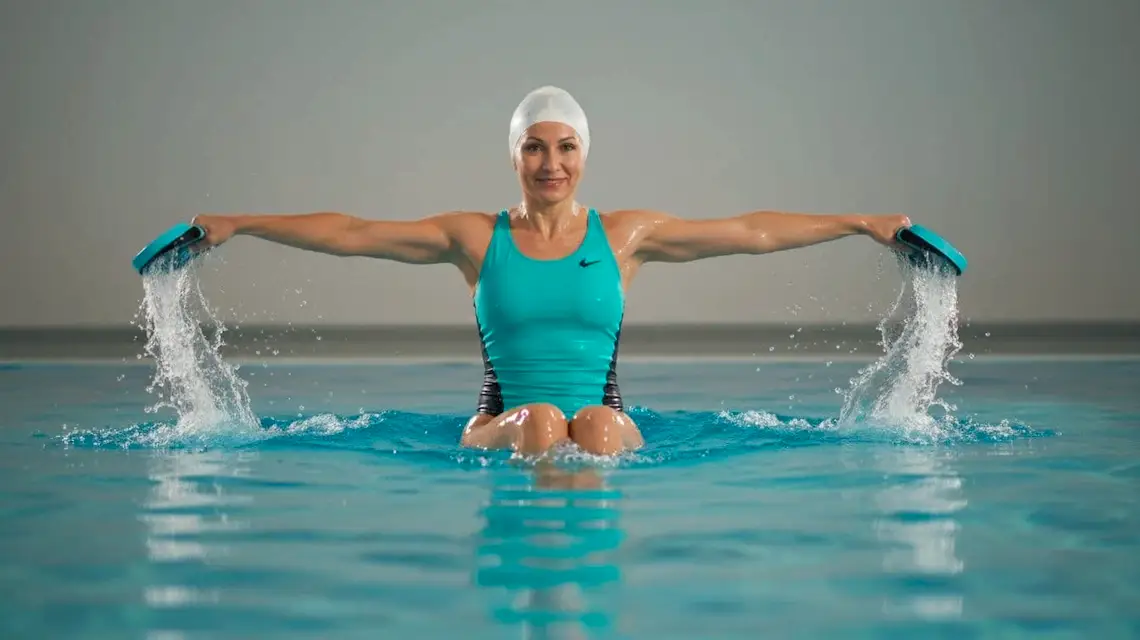

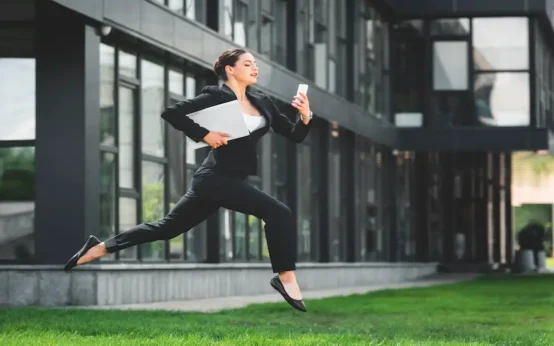 Fitness Tips for Busy Professionals
Fitness Tips for Busy Professionals 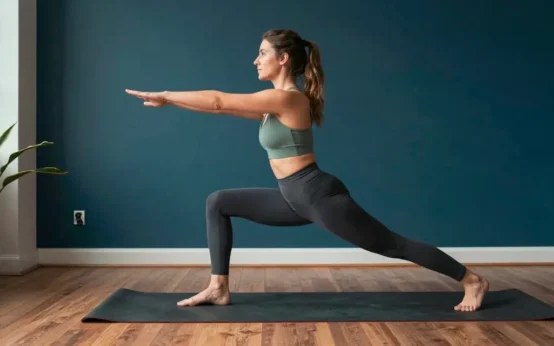 Beginner Cardio Workout at Home
Beginner Cardio Workout at Home 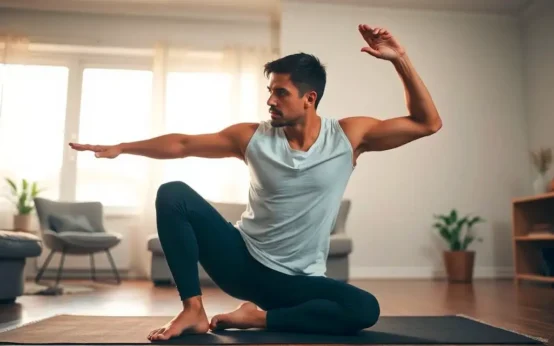 10 Stretching Exercises to Increase Height
10 Stretching Exercises to Increase Height 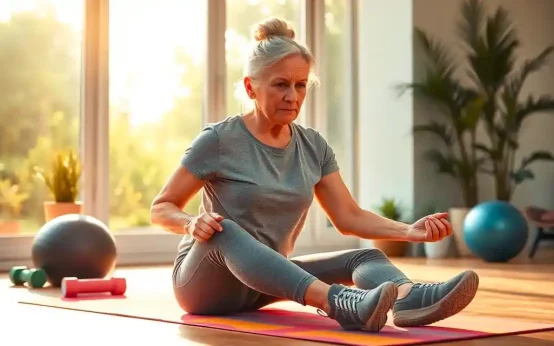 Menopause Workout: A Simple, Strong Plan
Menopause Workout: A Simple, Strong Plan 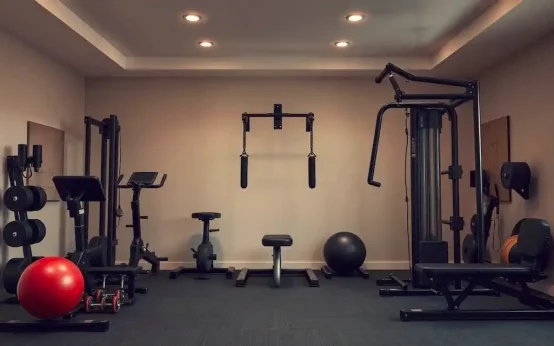 Best Home Gym Workout Equipment
Best Home Gym Workout Equipment 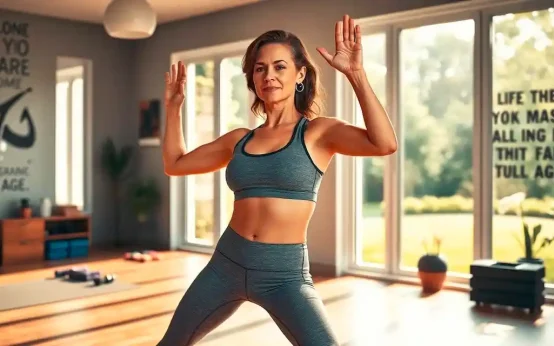 Exercise Tips Help You Look Great for Your Age
Exercise Tips Help You Look Great for Your Age